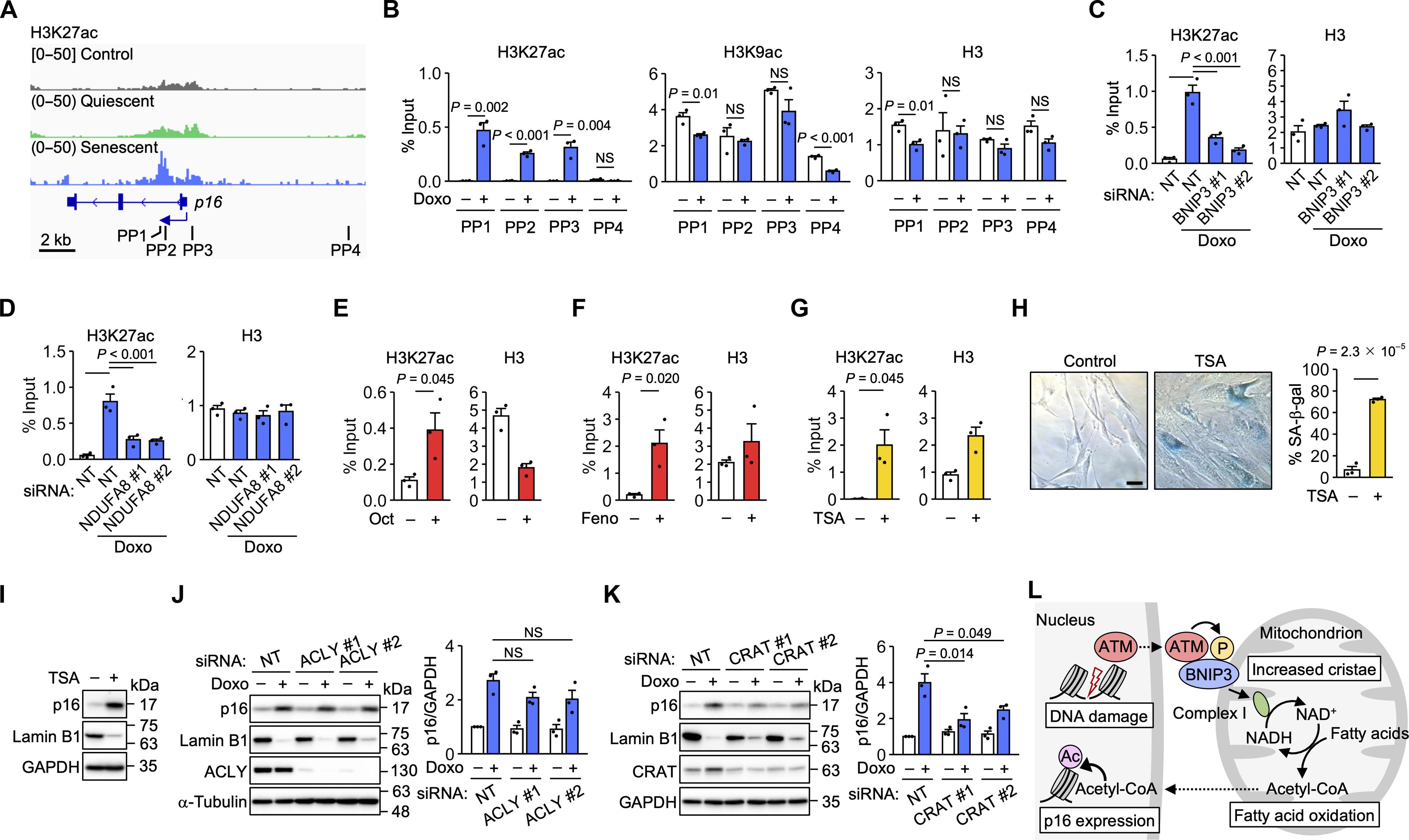Mitochondrial fatty acid oxidation drives senescence
IF 11.7
1区 综合性期刊
Q1 MULTIDISCIPLINARY SCIENCES
引用次数: 0
Abstract
Cellular senescence is a stress-induced irreversible cell cycle arrest involved in tumor suppression and aging. Many stresses, such as telomere shortening and oncogene activation, induce senescence by damaging nuclear DNA. However, the mechanisms linking DNA damage to senescence remain unclear. Here, we show that DNA damage response (DDR) signaling to mitochondria triggers senescence. A genome-wide small interfering RNA screen implicated the outer mitochondrial transmembrane protein BNIP3 in senescence induction. We found that BNIP3 is phosphorylated by the DDR kinase ataxia telangiectasia mutated (ATM) and contributes to an increase in the number of mitochondrial cristae. Stable isotope labeling metabolomics indicated that the increase in cristae enhances fatty acid oxidation (FAO) to acetyl–coenzyme A (acetyl-CoA). This promotes histone acetylation and expression of the cyclin-dependent kinase inhibitor p16INK4a. Notably, pharmacological activation of FAO alone induced senescence both in vitro and in vivo. Thus, mitochondrial energy metabolism plays a critical role in senescence induction and is a potential intervention target to control senescence.

线粒体脂肪酸氧化驱动衰老
细胞衰老是一种压力诱导的不可逆细胞周期停滞,与肿瘤抑制和衰老有关。许多压力,如端粒缩短和癌基因激活,都会通过损伤核 DNA 来诱导衰老。然而,DNA损伤与衰老的关联机制仍不清楚。在这里,我们发现DNA损伤应答(DDR)信号传导到线粒体会引发衰老。一项全基因组小干扰 RNA 筛选发现,线粒体外跨膜蛋白 BNIP3 与衰老诱导有关。我们发现,BNIP3被DDR激酶共济失调性毛细血管扩张症突变(ATM)磷酸化,有助于线粒体嵴数量的增加。稳定同位素标记代谢组学表明,嵴的增加促进了脂肪酸氧化(FAO)为乙酰辅酶A(乙酰-CoA)。这促进了组蛋白乙酰化和细胞周期蛋白依赖性激酶抑制剂 p16 INK4a 的表达。值得注意的是,仅药物激活 FAO 就会在体外和体内诱导衰老。因此,线粒体能量代谢在衰老诱导中起着关键作用,是控制衰老的潜在干预目标。
本文章由计算机程序翻译,如有差异,请以英文原文为准。
求助全文
约1分钟内获得全文
求助全文
来源期刊

Science Advances
综合性期刊-综合性期刊
CiteScore
21.40
自引率
1.50%
发文量
1937
审稿时长
29 weeks
期刊介绍:
Science Advances, an open-access journal by AAAS, publishes impactful research in diverse scientific areas. It aims for fair, fast, and expert peer review, providing freely accessible research to readers. Led by distinguished scientists, the journal supports AAAS's mission by extending Science magazine's capacity to identify and promote significant advances. Evolving digital publishing technologies play a crucial role in advancing AAAS's global mission for science communication and benefitting humankind.
 求助内容:
求助内容: 应助结果提醒方式:
应助结果提醒方式:


